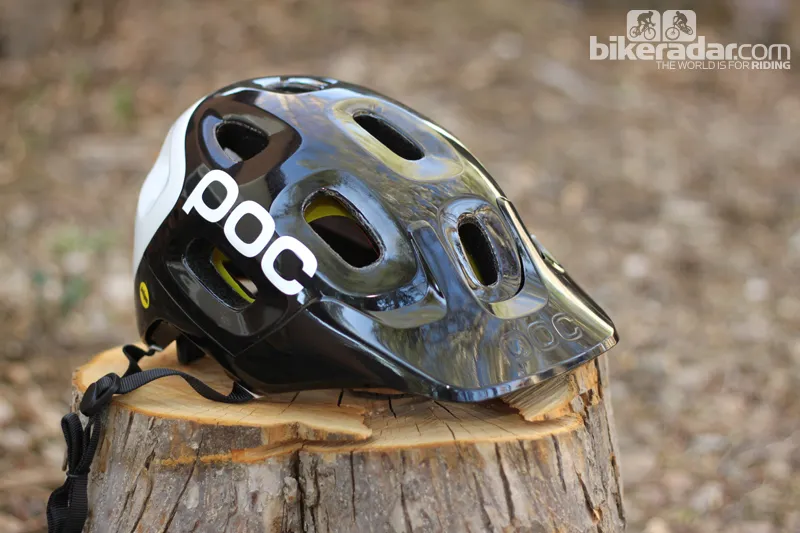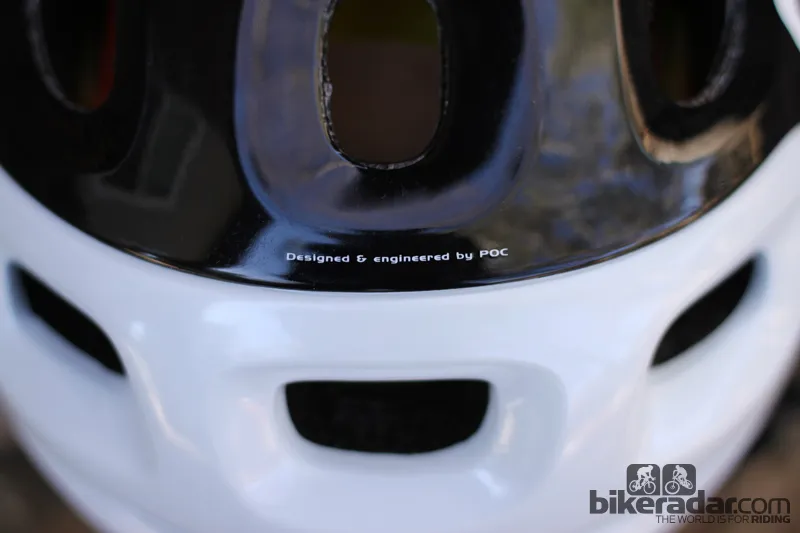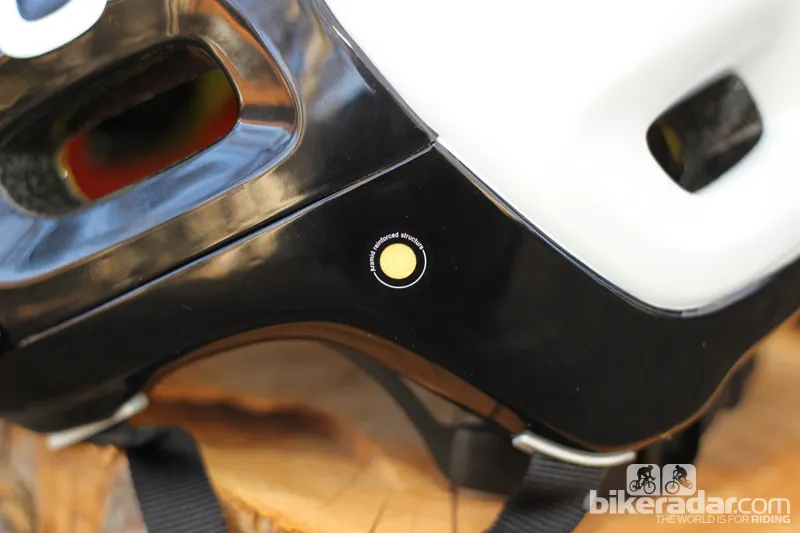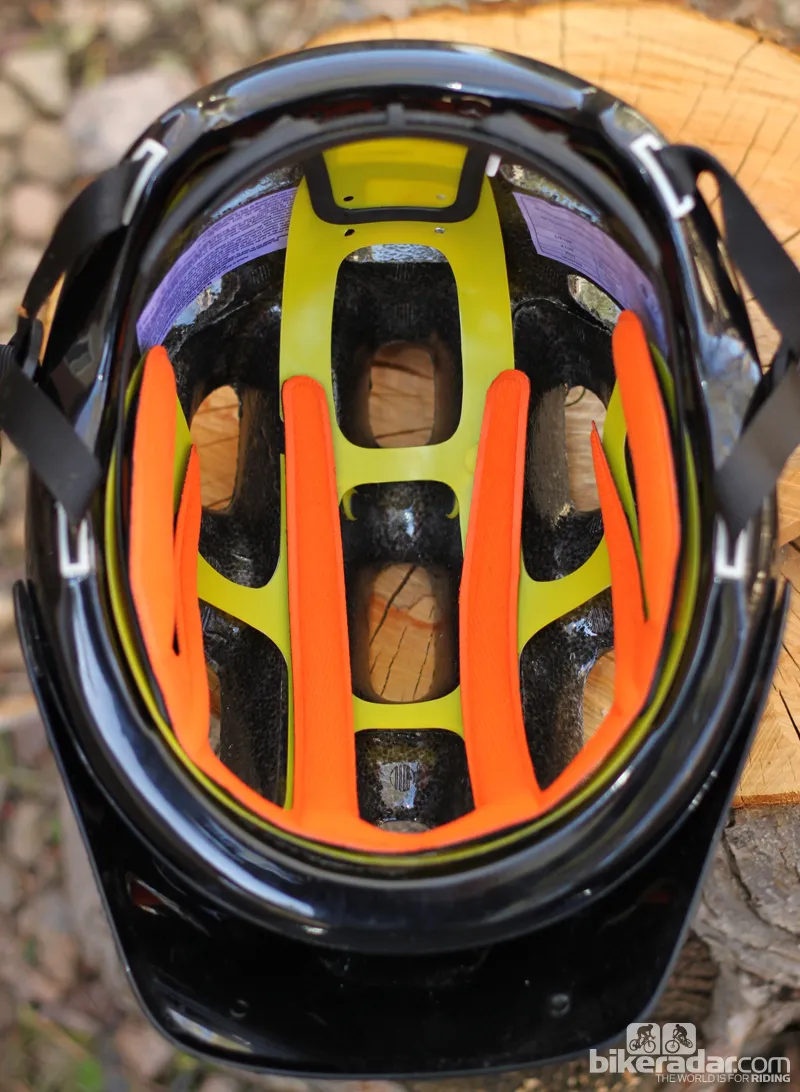Swedish protection manufacturer POC has a new line of helmets; they carry many of their recognized model names, Trabec in this case, but end with the acronym: MIPS (Multi-directional Impact Protection System). MIPS could well be safer than EPS (Expanded Polystyrene), which is standard in most helmets.
POC is one of four manufacturers currently using MIPS technology, which is designed and marketed by a brand bearing the same name. The Trabec Race MIPS weighs 389g (M-L) and costs US$200 (£200 in the UK), which is $30 (£40) more than the standard Trabec Race. Taking weight and coverage into consideration the Trabec Race MIPS helmet fits squarely in the ‘trail’ category.
MIPS primer
MIPS stands for Multi-directional Impact Protection System; what MIPS offers is an advanced level of oblique (angled) impact protection, which is modeled on the design of the human brain and the job of cerebral fluid in an impact. Cerebral fluid allows the brain to move in the skull after an oblique impact that causes rotational movement inside the skull; in turn, MIPS allows a rider’s whole head to rotate within a MIPS equipped helmet, lessening the rotational force transmitted to their head.
While the concept is fairly advanced, the MIPS system is very simple; it’s comprised of a plastic liner with a low friction outer coating. The liner is attached to the helmet with anchors that allow for movement in a crash, so when employed the liner will stay with the head and allow the helmet to deflect and absorb the energy trying to rotate the head.
POC adapted
The Trabec Race MIPS helmet is the same as the standard Trabec Race model. It relies on standard EPS foam to protect against vertical (90-degree) impacts and POC add a layer of Aramid fiber between the EPS and the polycarbonate outer shell, which is said to better protect the EPS from low force impacts and punctures, both better protecting the rider from puncture type injuries and better protecting the EPS liner from damage when in a gear bag or otherwise, thus extending the life of the helmet. Riders may also note that POC make a standard model called Trabec that comes without the MIPS or Aramid fiber layer — which is subsequently the lightest in the line.

A simple, but effective protection system, say MIPS
Initial fit on the Trabec Race MIPS is good. The EPS shell fit is similar to Giro’s Xen, as is the push-ratchet rear retention system, which has the important job of fixing the MIPS liner to a rider’s head. The helmet’s weight is noticeable when compared to the latest and greatest lightweight industry offerings, though peace (not piece) of mind comes with it.
POC forgoes the contemporary use of lightweight webbing for the straps; again those found on the Trabec Race are in line with what’s found on Giro’s older Xen. The visor is broad and offers 2-, maybe, 3-degrees of angular adjustment.
Finally, we count 11 intake vents and five exhaust vents on the helmet, all of which are smaller than those generally found on a road/cross-country, but should offer sufficient ventilation, especially when climbing, due to their orientation as they look to best vent by simple radiation. Like the whole of the Trabec design, the vents look to do their job without sacrificing much in terms of protection.





